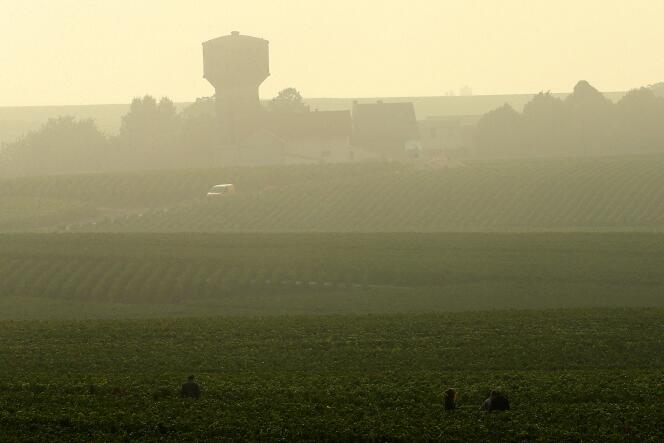The more vines there are around the home, the higher the risk of childhood leukemia. This is the major conclusion of a French study published Wednesday October 18 in Environmental Health Perspectives (EHP), the first to quantify this link on a national scale. Led by Stéphanie Goujon, Matthieu Mancini and Jacqueline Clavel (Inserm, Paris Cité University), this work concludes that, within a radius of 1 kilometer around the place of residence, a 10% increase in wine-growing areas – one of the crops those who consume the most pesticides – is associated with an increase of around 5% in the risk of acute lymphoblastic leukemia. By restricting the analysis to the period 2010-2013, for which the locations of the vineyard plots were best known, the authors calculate a higher increase in risk, of around 10%.
In all cases, the estimated average increase in risk is modest, especially since the incidence of leukemia is low – around fifty annual cases per million children under 15 years of age. But it is significant and considered robust by the researchers, who insist that these results must be assessed at the population rather than individual level.
The authors extracted from the National Childhood Cancer Registry (RNCE) more than 3,700 cases of pediatric leukemia occurring between 2006 and 2013 and located their homes at the time of diagnosis. They then compared this information to that of more than 40,000 controls of the same age, unaffected by the disease. “For all of these children, sick and not sick, we had the precise residence address which we were therefore able to geolocate, that is to say place on the map of mainland Francedetails Stéphanie Goujon. These addresses were then combined with a map of the cultivated areas and in particular the wine plots. »
Results vary depending on region
Why viticulture? In 2020, a first study at the scale of territories, and not of individuals, carried out by the same team, had already shown a higher incidence of childhood leukemia in the most wine-producing municipalities. In addition, the perennial nature of the vine lends itself well to the evaluation of its effects on the health of local populations.
The analysis shows that, rather than the proximity of the vines to the home, it is the proportion of territory devoted to viticulture, less than 1 kilometer from the place of residence, which is associated with an increase in risk. A risk which only concerns acute lymphoblastic leukemia (80% of childhood leukemia), and not the rarer acute myeloid leukemia, which in this analysis does not seem associated with the cultivation of vines.
You have 47.25% of this article left to read. The rest is reserved for subscribers.
